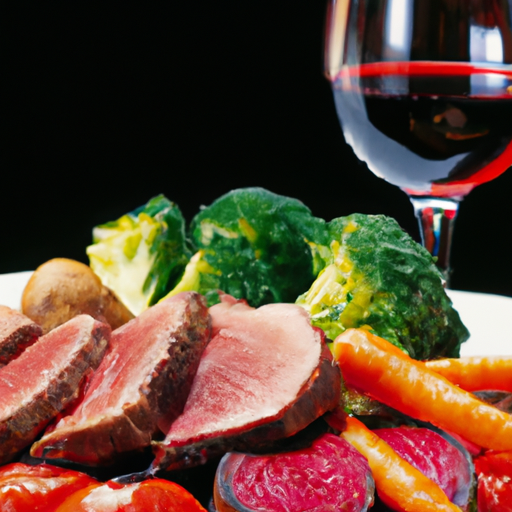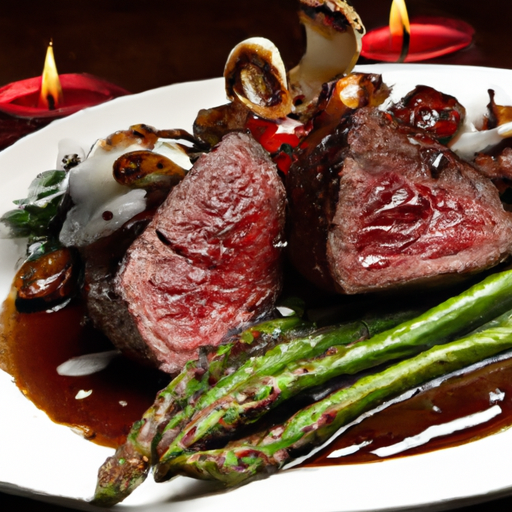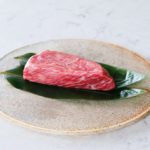Hey there! Have you ever wondered how to prepare a delicious chateaubriand for two? Well, you’re in luck because this article is going to cover all the steps and tips you need to know in order to create a mouthwatering chateaubriand dish that will impress your loved one or dinner guest. Get ready to take your cooking skills to the next level!
In this article, we will delve into the origins and history of chateaubriand, explore the best cuts of beef to use, and walk you through a step-by-step guide on how to perfectly cook a chateaubriand for two. We’ll also provide you with some helpful tips and tricks to ensure that your chateaubriand is cooked to perfection, with a juicy and tender center and a flavorful crust. Whether you’re a seasoned chef or a novice in the kitchen, this article will equip you with all the knowledge and confidence to prepare a memorable chateaubriand dinner for two. So, let’s get started and discover the secrets behind this classic French dish!

Chateaubriand For Two
What is Chateaubriand?
Chateaubriand is a classic French dish that is known for its elegance and indulgence. It is made from a tender cut of beef, typically taken from the center of the beef tenderloin. This luxurious dish is often enjoyed on special occasions or romantic dinners for two.
Origin of Chateaubriand
Chateaubriand gets its name from François-René de Chateaubriand, a French writer and diplomat who lived during the 18th and 19th centuries. Although Chateaubriand was not responsible for creating the dish, it was named after him to honor his contributions to French literature and culture.
Description of Chateaubriand
Chateaubriand is made using a thick cut of beef, usually around two inches in thickness, from the heart of the beef tenderloin. This cut is known for its unrivaled tenderness and marbling. The beef is typically seasoned with salt, pepper, and sometimes other herbs and spices to enhance its natural flavors.
Significance of Chateaubriand
Chateaubriand holds a special place in the culinary world as a symbol of sophistication and indulgence. It has been a favorite among gastronomes, gourmands, and fine dining enthusiasts for centuries. The dish’s luxuriousness and tender beef make it a perfect centerpiece for an elegant meal.
Preparing Chateaubriand
Choosing the Right Cut of Beef
To create an exceptional Chateaubriand, it is crucial to select the right cut of beef. The beef tenderloin is the most common choice, as it is incredibly tender and has a mild flavor that complements the dish. Seek out a fresh, well-marbled piece of beef that is evenly cut, without any irregularities.
Marinating the Beef
Marinating the beef tenderloin is often not necessary, as the meat itself is already flavorful. However, some people choose to marinate it for added moisture and taste. A simple marinade can be made using olive oil, garlic, herbs, and a splash of red wine. Allow the beef to marinate for at least one hour before cooking.
Seasoning and Cooking the Chateaubriand
Before cooking the Chateaubriand, make sure to season it generously with salt and pepper. This will enhance the flavors of the beef and create a delicious crust when seared. Heat a pan with some oil or butter over medium-high heat and sear the beef on all sides until browned. Then, transfer it to a preheated oven and cook until it reaches your desired level of doneness.
Resting and Slicing the Beef
Once the Chateaubriand is cooked to perfection, it is essential to let it rest before slicing. This allows the juices to redistribute throughout the meat, resulting in a moist and flavorful dish. Rest the beef for at least 10 minutes before slicing it into thick, tender medallions.
Accompaniments and Sauces
Selecting Side Dishes
When serving Chateaubriand, it is essential to choose side dishes that complement the rich flavors of the beef. Traditional options include roasted potatoes, sautéed mushrooms, and steamed vegetables. The side dishes should be simple and should not overpower the star of the meal.
Classic Sauces for Chateaubriand
Chateaubriand is often served with classic French sauces that elevate the flavors of the dish. Béarnaise sauce is a popular choice, made from egg yolks, butter, vinegar, and tarragon. Another classic option is a red wine reduction sauce, which pairs beautifully with the tender beef.
Modern Sauce Variations
For those looking to give their Chateaubriand a modern twist, there are countless variations of sauces to experiment with. Some popular options include truffle butter sauce, blue cheese sauce, or a red wine and mushroom reduction. These sauces can add a unique and flavorful touch to the dish.
Presentation and Serving
Garnishing Techniques
To enhance the visual appeal of your Chateaubriand, consider incorporating some garnishing techniques. Sprinkle fresh herbs, such as parsley or chives, over the sliced beef for a vibrant touch. You can also add a drizzle of sauce around the plate to create an elegant presentation.
Plating Suggestions
When plating your Chateaubriand, aim for simplicity and elegance. Place the sliced beef in the center of the plate, surrounded by the chosen side dishes. Arrange everything neatly, ensuring that the colors and textures complement each other. The presentation should showcase the beauty and tenderness of the beef.
Table Setting for Elegant Dining
To complete the dining experience, set the table with elegance and attention to detail. Use fine china, polished silverware, and crystal glassware for a sophisticated touch. Dim the lights, light some candles, and play soft background music to create a romantic ambiance.

History and Popularity
The Name and Its Origins
Despite its name, Chateaubriand was not invented by François-René de Chateaubriand himself. Instead, it was named in his honor by his personal chef, Montmireil. The dish gained popularity during the 19th century and has since become a staple in French cuisine.
Chateaubriand’s Culinary Influence
Chateaubriand’s impact on the culinary world extends beyond the creation of a single dish. François-René de Chateaubriand’s writings and travels introduced French cuisine to the world and played a significant role in shaping the modern concept of fine dining.
Chateaubriand in Fine Dining
Chateaubriand has long been associated with fine dining establishments, where it represents luxury and refinement. Today, many high-end restaurants continue to serve this classic dish as a testament to its timeless appeal.
Chateaubriand in Different Cuisines
French Chateaubriand Variations
While the traditional Chateaubriand recipe remains popular, there are also variations of this dish in French cuisine. Some chefs add foie gras or truffles to elevate the dish further. These additions enhance the richness and indulgence of Chateaubriand, creating a truly unforgettable dining experience.
International Chateaubriand Recipes
Chateaubriand’s popularity has spread beyond French borders, with many countries putting their unique twist on the dish. In the United States, for example, it is often served with a spicy Cajun seasoning. In Argentina, it might be accompanied by chimichurri sauce, a traditional Argentine condiment that adds a burst of flavor.
Pairing Chateaubriand with Wines
Classic Wine Pairings
When it comes to pairing wine with Chateaubriand, classic choices are often the best. A full-bodied red wine, such as a Bordeaux, Cabernet Sauvignon, or Malbec, complements the richness of the beef perfectly. The tannins in these wines help cut through the fatty flavors, resulting in a harmonious combination.
Emerging Wine Trends
In recent years, there has been an emergence of new wine trends that offer exciting pairings for Chateaubriand. Some wine enthusiasts choose to pair it with a bold and spicy Syrah or a fruity and herbaceous Pinot Noir. These unconventional pairings offer a unique and memorable taste experience.
Non-Alcoholic Beverage Alternatives
For those who prefer non-alcoholic beverages, there are plenty of options to enjoy with Chateaubriand. Sparkling cider or grape juice can provide a refreshing and celebratory touch. Alternatively, opt for a high-quality ginger ale or a flavored sparkling water to complement the flavors of the dish.
Chateaubriand for Special Occasions
Valentine’s Day Celebration
Chateaubriand is often associated with romantic occasions, making it an ideal choice for Valentine’s Day celebrations. Enjoying this luxurious dish with your loved one is a delightful way to create a memorable and intimate dining experience.
Anniversary and Engagement Dinners
Anniversaries and engagement dinners call for a special meal that reflects the significance of the occasion. Chateaubriand’s elegance and timeless appeal make it a perfect choice to commemorate these important milestones.
Fine Dining at Home
While Chateaubriand is often associated with fancy restaurants, it is entirely possible to recreate the fine dining experience in the comfort of your own home. By following the steps outlined earlier, you can prepare a restaurant-quality Chateaubriand that will impress your guests and create a memorable culinary experience.
Variations of Chateaubriand
Chateaubriand with Seafood
For seafood enthusiasts, there are variations of Chateaubriand that incorporate fish or shellfish. Instead of beef, a thick cut of fish, such as salmon or halibut, can be used. The cooking process remains similar, resulting in a delightful surf and turf combination.
Vegetarian and Vegan Alternatives
While Chateaubriand is traditionally a beef dish, vegetarians and vegans can still enjoy a similar culinary experience. Replacing the beef with a thick-cut vegetable steak, such as portobello mushrooms or eggplant, can create a flavorful and satisfying alternative.
Chateaubriand-inspired Desserts
The elegance and sophistication of Chateaubriand can also be translated into desserts. Chateaubriand-inspired desserts often feature tender, rich elements paired with sweet accompaniments. For example, a tender chocolate cake served with a rich caramel sauce can evoke the flavors and textures of the classic dish.
Conclusion
Experience the Elegance of Chateaubriand
Chateaubriand is more than just a dish – it is an experience. Its tender beef, rich flavors, and luxurious presentation make it a symbol of elegance and indulgence. Whether you’re celebrating a special occasion or simply want to treat yourself and your loved ones, Chateaubriand is sure to create unforgettable culinary moments.
Creating Memorable Culinary Moments
By following the steps outlined in this article, you can confidently prepare and present a stunning Chateaubriand for two. Whether you’re a seasoned cook or a beginner in the kitchen, this dish is sure to impress and delight. So gather your ingredients, sharpen your knives, and get ready to embark on a culinary adventure that will leave a lasting impression.
Greetings!
With over two decades of diverse experience in the meat industry, I proudly stand as an expert in all things meat. My journey commenced with a strong foundation in hospitality, where I honed my culinary skills as a chef in prestigious restaurants and on luxurious superyachts worldwide.
However, my true passion lies in the art of butchery. Throughout my extensive career, I have had the privilege of working with renowned meat purveyors and mastering the craft of meat cutting and preparation. From breaking down whole carcasses to meticulously selecting prime cuts, my butchery expertise is at the core of my meat knowledge.
Having immersed myself in various cultures and cuisines, I have honed my skills to deliver exceptional dining experiences, crafting delectable dishes that celebrate the natural flavors of different meats. Whether it's sourcing the finest meats for discerning clients or sharing valuable tips on meat selection and cooking, I take pride in elevating the meat experience for both professionals and enthusiasts.
My journey has taken me from the bustling kitchens of top-rated restaurants to the heart of meat processing facilities, gaining insights and honing my skills to become a true meat connoisseur. Now, I am enthusiastic about sharing my expertise, offering valuable insights on meat selection, cooking techniques, and the art of butchery.
















